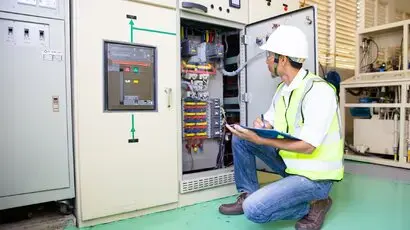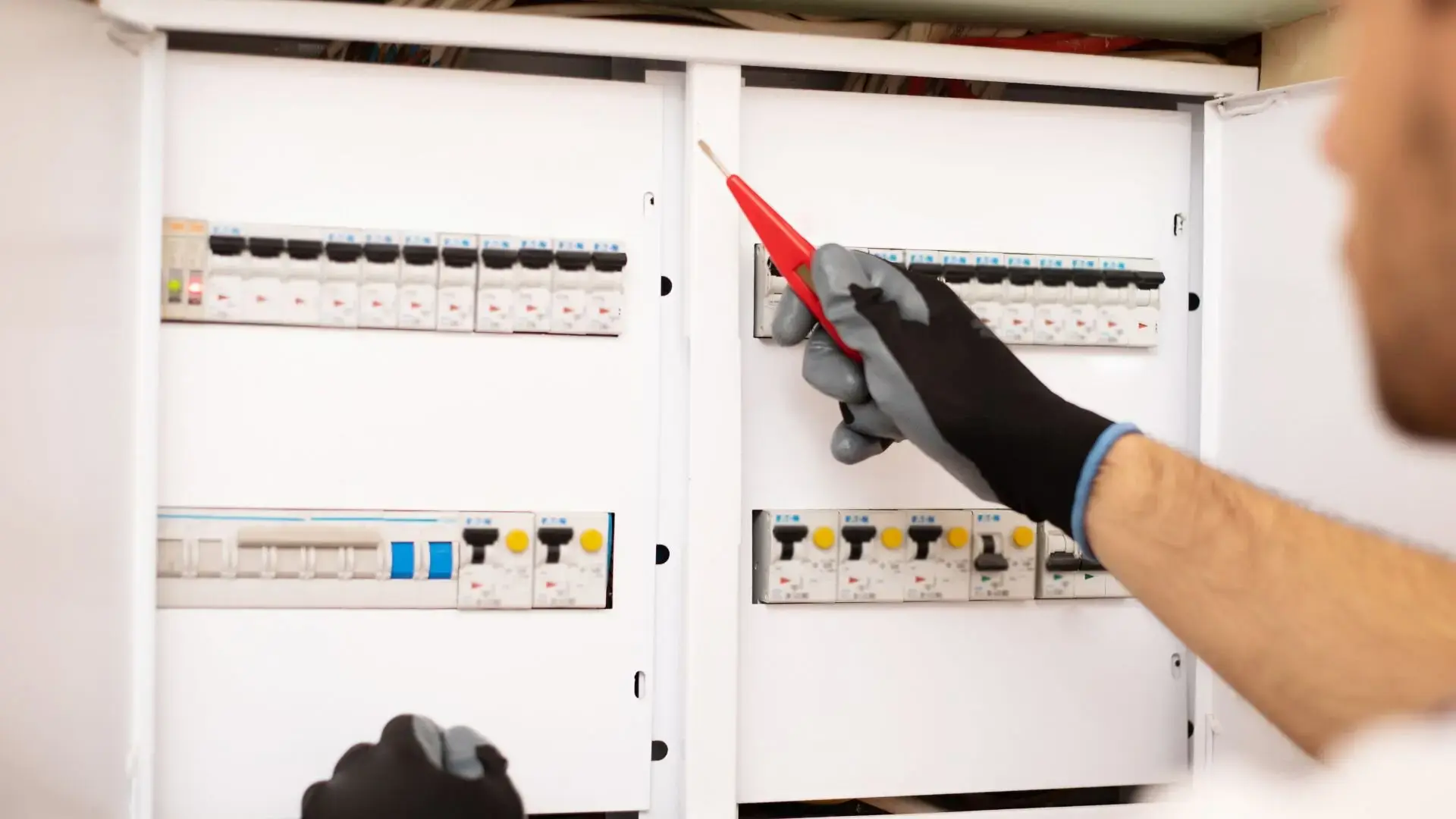
Get your free Melbourne Electrician quote today!
Our team of Melbourne Electricians is here to help you with any questions or concerns you may have. We’re committed to providing you with the best possible service and support.
Neglecting switchboard inspections can lead to severe consequences, including electrical hazards, system failures, and potential fire risks. Establish a proactive maintenance routine by understanding the optimal frequency for switchboard inspections, ensuring a safe and efficient electrical infrastructure.
Having a working switchboard is vital for both homes and businesses. It acts as the central point for the electrical system and ensures everything runs smoothly and safely. If you overlook regular maintenance, you risk facing serious problems like electrical hazards, system failures, and even fires or power outages. Regular electrical inspections are important for catching and fixing issues with components, wiring, or other equipment before they become major problems.
How often you need to inspect your switchboard depends on several factors, like the age of the electrical system, the amount of electricity used, and whether there are safety switches or power factor correction capacitors. Commercial buildings, especially those with many appliances and higher energy use, might need inspections more often than homes.
Regardless of the building type, failing to prioritise electrical system maintenance can compromise occupant safety and lead to costly repairs or replacements of circuit breakers, control wiring, and other electrical components. Investing in surge protectors and ground fault circuit interrupters can help mitigate the risks of power surges and protect your electrical appliances.
In this article, we’ll discuss why hiring a qualified, licensed electrician for regular switchboard upkeep is essential, how often you should schedule electrical inspections according to industry standards, and the risks of ignoring this vital part of maintaining your electrical system. Proper surge protection is key to keeping your system safe and lasting longer.
The Importance of Regular Switchboard Inspections

A professional switchboard inspection involves a detailed look at your electrical switchboard and all its parts. Qualified electricians carry out this preventive maintenance process to ensure your home’s electrical system runs properly and to reduce potential electrical problems.
Visual Assessment of the Electrical Switchboard
The inspection typically begins with visually assessing the electrical switchboard and its enclosure, checking for any signs of damage, corrosion, or overheating. The electrician will then test the insulation resistance of the electrical wiring, cables, and connections, ensuring they meet current standards and identifying any areas of concern.
Verifying Functionality of Safety Devices
Next, the electrician will verify the functionality of ground fault circuits, safety switches, and other protective devices, ensuring they operate correctly and prevent electrical surges, voltage spikes, and overloads. This step is crucial in mitigating the risk of severe electrical fires or other electrical issues. The test button on the safety switch will be activated to confirm that it is working correctly.
Examining Switchboard Components
The inspection process also thoroughly examines the switchboard’s components, such as bus bars, terminals, and earthing systems, to ensure they are in good condition and properly connected. The electrician may also check for any signs of pests or vermin that could compromise the electrical equipment’s safety.
Understanding how often electrical inspection services should be performed is essential for keeping everyone and electrical equipment safe. Regular switchboard inspections offer numerous benefits beyond ensuring electrical safety, including identifying potential issues early, addressing them before they escalate, and optimising the performance of your electrical system.
Inspecting the Main Switch
Electricians will also inspect the main switch to ensure it functions correctly and can safely disconnect the power supply if needed. A proper cleaning solution may be used to remove any dirt or debris that could interfere with the switchboard’s operation.
Adequate protection, such as using metal oxide varistors and proper overcurrent protection, can help protect against voltage spikes, earth leakage, and short circuits, preventing hazardous situations and helping keep your family safe, especially in older houses.
The Importance of Hiring a Qualified Electrician
Hiring a qualified and licensed local electrician for switchboard inspections and electrical services is crucial. These professionals have the necessary training, expertise, and equipment to conduct thorough inspections, testing, and maintenance, identifying potential electrical hazards that may go unnoticed by untrained individuals. Attempting to inspect or repair electrical switchboards without proper qualifications can put you and your property at risk.
By enlisting the services of a reputable electrician for regular switchboard maintenance, you can enjoy peace of mind knowing that your electrical system is functioning safely and efficiently, minimising the risk of electrical fires, power outages, or other severe electrical issues.
Prioritise Electrical Safety with WP Electrical
Prioritise electrical safety and efficiency by scheduling regular maintenance with a qualified local electrician to inspect and test your electrical switchboard. WP Electrical, trusted electricians in Melbourne, provide comprehensive switchboard services to ensure your electrical equipment is safe, functioning optimally, and compliant.
Their experienced professionals conduct thorough inspections, test safety switches, clean solutions, and verify that components work correctly. Don’t compromise on electrical safety—contact WP Electrical for regular switchboard maintenance. This will prevent any significant safety concerns and prolong the lifespan of your switchboards and electrical systems.
Published by: Pascal Harb17 October 2025